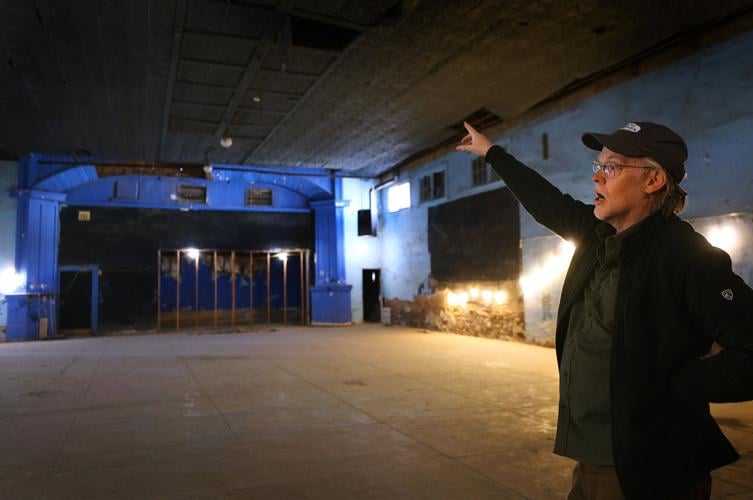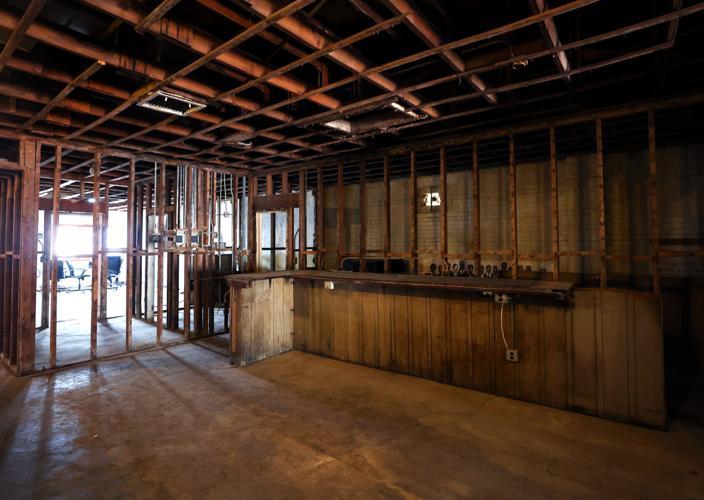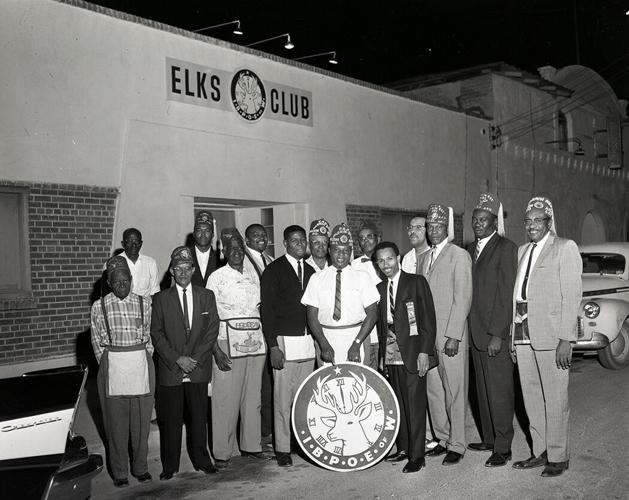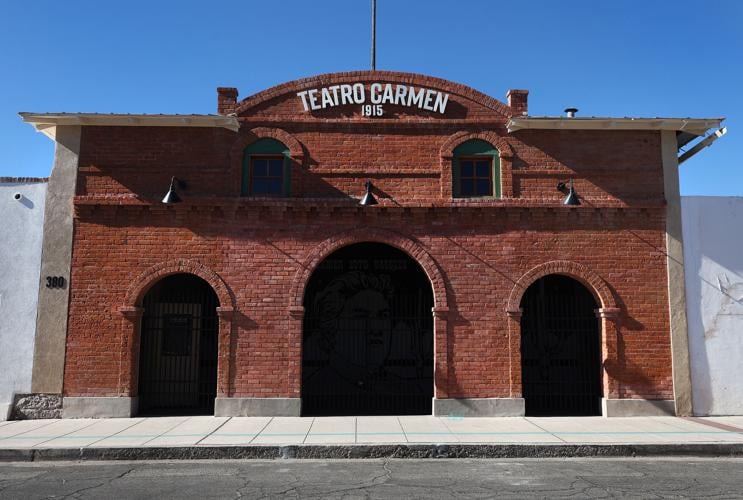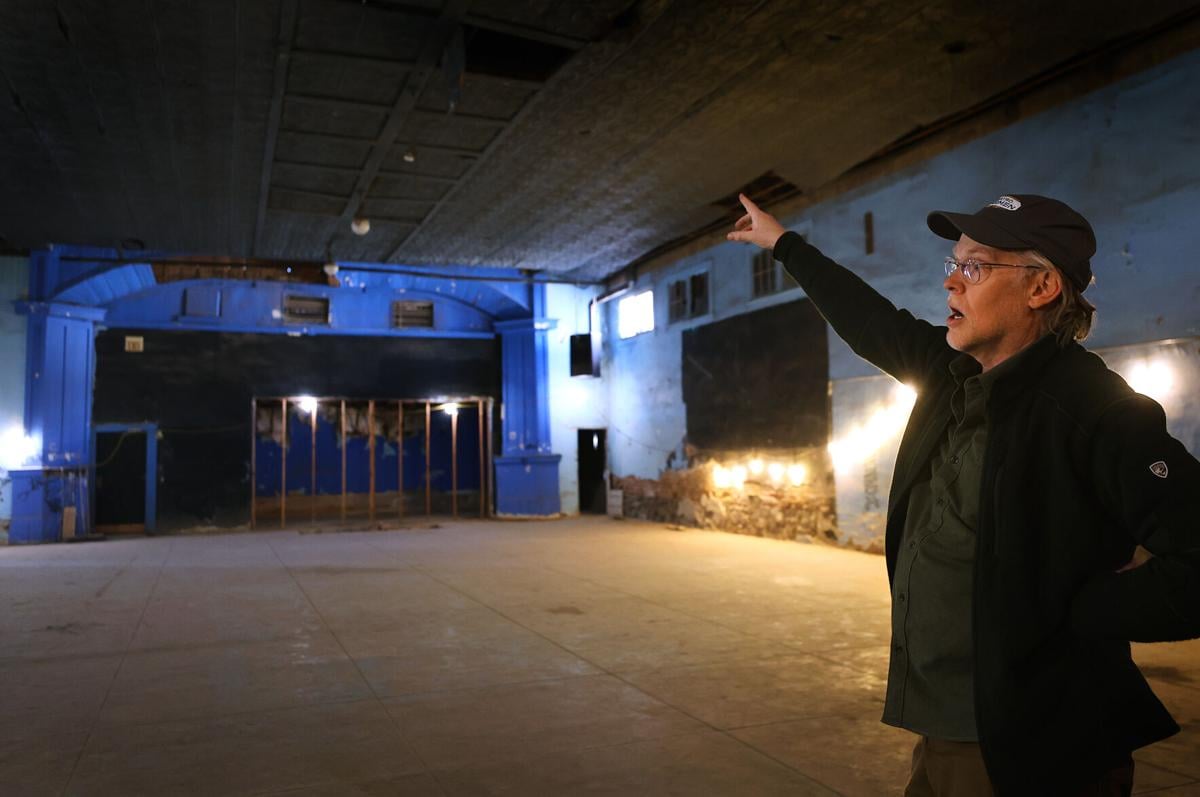Herb Stratford shined the flashlight into Teatro Carmen‘s musty mezzanine crawl space on that Saturday in early May.
There, peeking out from dust a hundred years in the making, was what looked like a folded piece of paper.
“I very gently started to lift it out, and it’s like, ‘Oh, holy crap’,” he recalled. “This must be something bigger than just a scrap of paper.”
When he carefully blew off the layers of dust and gingerly unfolded it, Stratford discovered the tattered remnants of a 1919 concert poster, written in Spanish.
Where there’s one tiny treasure, there could be a second, he thought.

Black Elks Club late 1950’s
Sure enough, when he poked back into the space he found a second folded-up poster, this one for a comedy show coming to what was, back then, Tucson’s largest venue and its only Mexican theater.
“When I found those posters, it was like opening King Tut’s tomb,” said Stratford, whose non-profit Stratford Art Works is restoring the historic Barrio Viejo theater.
Stratford started working on the $9 million project in 2021 and completed the first phase, restoring the theater’s brick facade, in April.
The project, funded by grants and $3 million from the building’s owner, Pima County, is expected to continue through 2026. The $1.3 million second phase — replacing the roof and structural work — is set to begin in February. It could take six months.

The former bar from the Black Elks Club, seen on the right, will be used as part of the renovation of the historic Teatro Carmen. The Black Elks Club used the space for 50 years.
The restoration includes creating a 300-seat theater and events space, with an adjacent restaurant and bar; and a 7,000-square-foot outdoor patio on vacant land at the corner of South Meyer and West Simpson Street, where a Chinese market had operated for decades before closing in 1966.
Stratford, who spearheaded the Fox Tucson Theatre restoration in the early 2000s, took on the Teatro Carmen project in 2019, but it was delayed courtesy of the pandemic.
Stratford’s goal is to bring the Sonoran Mission-style theater back to the way it was when Carmen Soto de Vasquez opened it in 1915, which requires extensive research. But Stratford quickly discovered that there was little to be found when he searched the archives at the Arizona Historical Society, the University of Arizona and the Arizona Daily Star.

Herb Stratford, director of Stratford Art Works, found a couple of old posters in the ceiling of the Teatro Carmen theater and plans to have them restored.
“The Carmen is really an enigma because it was in the barrio and the media locally tended to ignore it,” Stratford said. “The majority of resources I can find at this point ... are in Spanish language newspapers like El Mosquito that do not have photographs and sometimes exaggerate so I have very little written history.”
The theater had very little local media coverage in the seven years it operated; it closed in 1922 and became home to a fish import business and auto repair shop before the Black Elks (Pilgrim Rest Elks Lodge No. 601) bought it in 1936.
The Black Elks, an African-American social club that operated out of the building until 1986, was occasionally the focus of legendary Tucson photographer Jack Schaeffer’s lens. Schaeffer, the Arizona Daily Star chief photographer from the 1970s until he was gravely injured in an explosion at the newspaper in 1982, regularly photographed the club’s social events and galas.
But the photos told Stratford little about the theater; the Elks had changed the footprint, including removing the stage and building an addition next door. A photo taken in 1936 from a nearby Chinese market showed that the Black Elks also removed the original stage house.
The stage house is part of the upcoming second phase, which will include fortifying the adobe walls; Stratford said the metal roof is largely what’s holding them up.
In between the big tasks, Stratford is checking smaller boxes including rewiring the building and placing electrical lines underground. He’s also secured grants and funding for new plumbing and a new HVAC system, which will come when they begin the interior work later this year or in early 2026.

The historic Teatro Carmen theater, 380 S. Meyer Ave., sits in Barrio Veijo, south of the Tucson Convention Center.
“In a perfect world, beginning in 2027 we will start having events here,” Stratford said.
When that happens, Barrio Viejo will have an accessible community event space and designated cultural venue, said longtime Tucson anthropologist Maribel Alvarez, founder of the Southwest Folklife Alliance that puts on Tucson Meet Yourself.
“The reality is that it has been empty and not designated as a cultural venue. And the fact that it’s now going to be that again, it’s probably a good thing,” Alvarez said. “It’s better than a parking lot.”
Stratford said the theater’s impact on the barrio “is going to be profound, in a good way.”
“That space could easily have been turned into an historic facade with three condos behind it,” said Stratford.
“We are very lucky to be able to get the property and return it to its original use,” he said.


